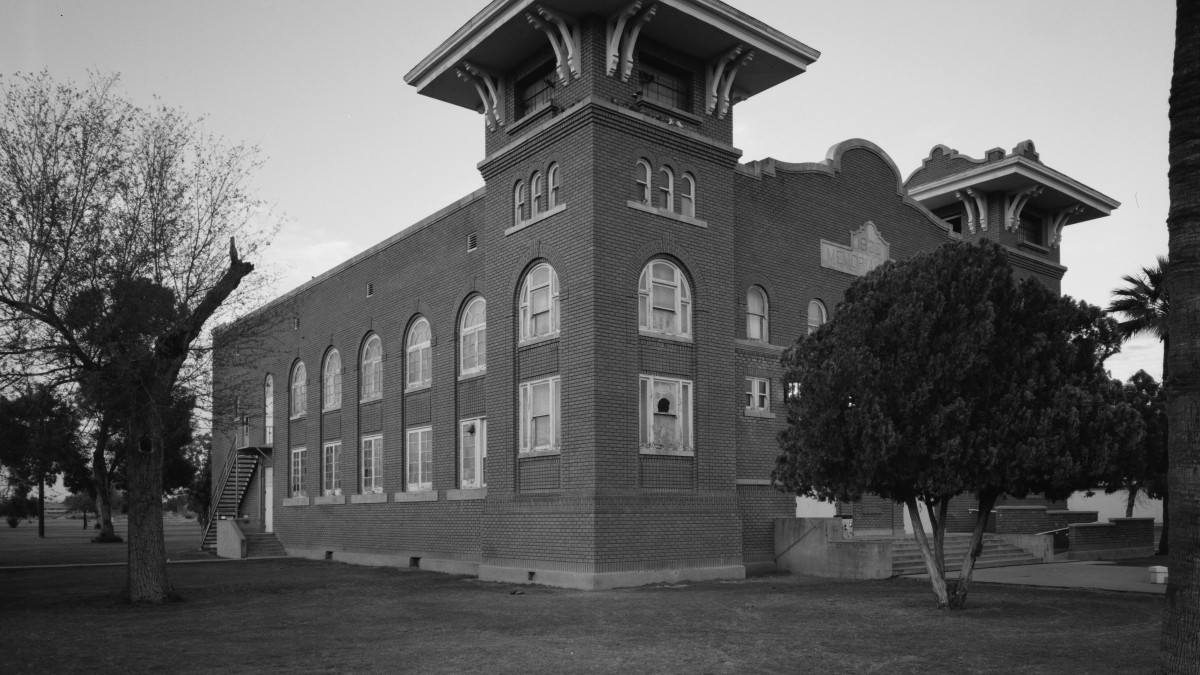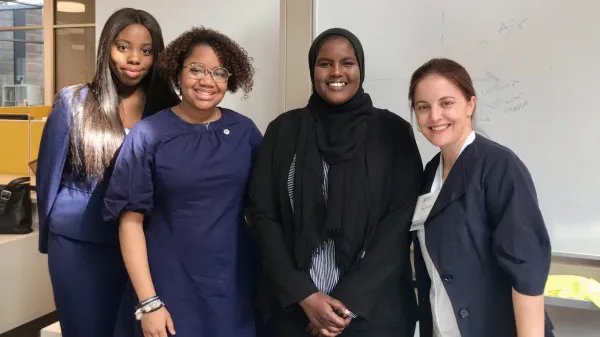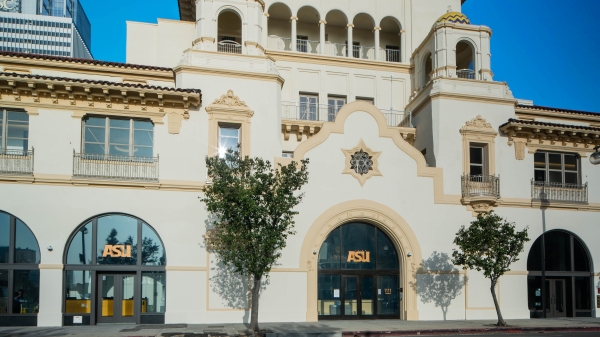ASU students win top media award for American Indian coverage
Team of Cronkite School journalists honored by Native American Journalists Association for Phoenix Indian School project

A team of Arizona State University students at the Walter Cronkite School of Journalism and Mass Communication won a top multimedia award from the nation’s leading professional organization dedicated to American Indian coverage.
Cronkite students in the New Media Innovation and Entrepreneurship Lab took first place in the 2017 Native American Journalists Association media awards in the Student Category – TV for Best Feature Story. The award-winning project, “Walking in Two Worlds — The Phoenix Indian School,” is an interactive virtual-reality experience that uses 360-degree video to showcase life at the historic Phoenix Indian School.
Under the direction of Cronkite faculty member Retha Hill, director of the New Media Innovation and Entrepreneurship Lab, students work side by side with computer engineering, design and business students to create cutting-edge digital media products for regional and national media companies and other organizations.
“We wanted to show the impact of newer technology in bringing history alive using tools that aren’t super expensive,” Hill said. “VR gives us the ability to take viewers into a world they might not be familiar with and to take them back in history in an interactive way.”
The Cronkite students involved in the project included Terrnekia Collier, Weldon Grover, Stephanie Holland and Greg Walsh. They worked with the Heard Museum in Phoenix to add an interactive feature to the museum’s exhibit on the school.
Grover said the project hit home for him because his grandparents met at the Phoenix Indian School.
“It was very interesting to hear other personal stories from former students,” he said. “Working with 360 gave our group new perspectives and approaches to tell stories.”
For the project, the students interviewed three individuals who went to the school — which opened in 1891 and closed in 1990 — during different eras. The school was operated by the Bureau of Indian Affairs in Phoenix and was the only non-reservation BIA school in the state. It became part of the National Register of Historic Places in 2001.
The Cronkite students created 360 video, incorporating old photographs and photos from online and turning 2-D images into a 3-D experience. They also stitched together photographs of old school buildings with structures that remain on-site today to transport audiences back into that world. The students also captured audio and scenes from a reunion among those who had attended the school.
“This award-winning project shows the world a side of our history that was seemingly lost,” said Cronkite Dean Christopher Callahan. “We’re extremely proud of the hard work and amazing creativity of our students in using cutting-edge technologies to tell powerful stories of our past.”
The project was recognized at the NAJA’s Sept. 7–9 conference in Anaheim, California. The annual competition recognizes excellence in reporting by Native and non-Native journalists across the U.S. and Canada. There were more than 700 entries across the following categories: Student Division, Associate Division I, Associate Division II, Associate Division III, Professional Division I, Professional Division II and Professional Division III.
The NAJA serves and empowers Native journalists through programs and actions designed to enrich journalism and promote Native cultures. For more than 30 years, NAJA has remained committed to increasing the representation of American Indian journalists working in media, while encouraging both mainstream and tribal media to attain the highest standards of professionalism, ethics and responsibility.
Find the Cronkite students' video here.
More Law, journalism and politics

School of Politics and Global Studies director's new book explores mass violence
Why do people commit atrocities and why are certain groups, including religious and ethnic, more vulnerable to large-scale violence? These questions are explored in a new book by Güneş Murat Tezcür…

ASU faculty contributing to improvement of Wikipedia
Many academics have a love-hate relationship with Wikipedia. While the website has information about almost anything you can imagine, the credibility of that information is sometimes suspect. Tracy…

ASU Law students gain vital experience through Los Angeles location
Students at the Sandra Day O’Connor College of Law at Arizona State University may be concentrated in the school’s downtown Phoenix headquarters, but they have more choices than ever when it comes to…